This Replica of a Tlingit Killer Whale Hat Is Spurring Dialogue About Digitization
Collaboration between museums and indigenous groups provides educational opportunities, archival documentation—and ethical dilemmas
Initially, the Killer Whale clan crest hat, or Kéet S’aaxw, seems indistinguishable from the model beside it. Both depict a killer whale emerging from the ocean, vividly rendered in shades of red and turquoise as streams of water, represented by abalone shells and hair, flow over its body.
Though there are minor differences in texture and edge details, the resemblance is striking—especially after viewers realize that one of the hats is a sacred object imbued with the ancestral history of the Tlingit Dakl’aweidi clan and the other is a piece of painted wood.
In all fairness, the 3D-milled replica of the original Killer Whale hat is a meticulously crafted feat of modern technology. Innovation, however, does not equate to the spiritual significance embodied by the real Kéet S’aaxw, and this differentiation is important: It’s why the Killer Whale hat (and its copy), the southeastern Alaska-based Dakl’aweidi clan and the Smithsonian Institution have become embroiled in the challenges of the ongoing issues surrounding repatriation, artifact digitization and cultural heritage.
The story of the Kéet S’aaxw begins in 1900, when it was carved for Dakl’aweidi leader Gusht’eiheen, or Spray Behind the Dorsal Fin, by his brother-in-law Yéilnaawú, a well-known Deisheetaan clan artist. Several years later, the hat was acquired in 1904 by Smithsonian ethnologist John Swanton—it remained in the Institution’s collections for more than a century.
But, when museums across the country started to repatriate, or return, human remains, sacred and funerary items and objects of cultural patrimony to indigenous tribes (Smithsonian repatriations are governed by the 1989 National Museum of the American Indian Act, while other institutions adhere to the 1990 Native American Graves Protection and Repatriation Act, or NAGPRA), the Tlingit reclaimed many of their lost clan items, including the Killer Whale hat.
On January 2, 2005, the hat was repatriated to clan leader Mark Jacobs, Jr., an ardent champion of Tlingit cultural preservation efforts. That same day, members of the Raven and Eagle moieties, or binary social groups, joined Jacobs, who had fallen seriously ill, at the hospital in Sitka, Alaska, and used the hat in ceremony for the first time in more than 100 years. Jacobs died eleven days later with the Kéet S’aaxw beside him.
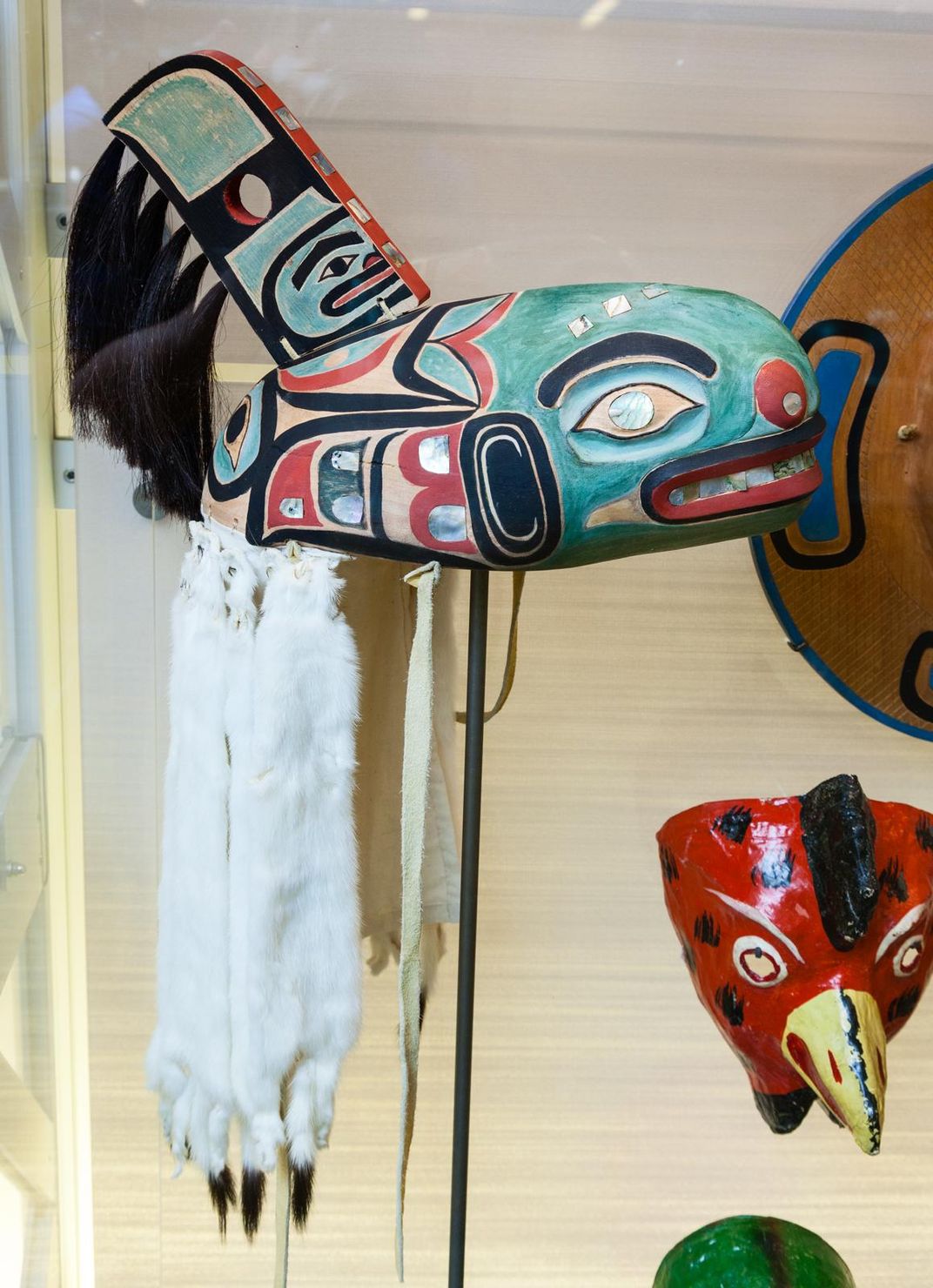
Jacobs’s successor, Edwell John, Jr., assumed leadership of the Dakl’aweidi in 2007. As clan leader, John became caretaker of the clan’s sacred objects, though he emphasizes that they are communal rather than personal property. These objects, which are known as at.óow, bear the clan’s crest and have great historical, cultural and religious significance. Many have been passed down for generations, but longevity isn’t the reason for their sacred status. Instead, at.óow transition from secular to sacred objects during a special ceremony.
“At.óow doesn’t mean old,” John explains. “It means it belongs to the clan and it’s precious. It’s a representation of the clan.”
The Killer Whale hat, for example, embodies clan ancestors and lets members of the tribe feel the presence of their relatives. “You don’t necessarily see a piece of wood,” John adds.
Objects become at.óow during a memorial potlatch. At this ceremony, representatives of the opposite moiety recognize the unveiling of an official clan crest object. Without this acknowledgement, the object is considered a piece of personal property, not at.óow.
Eric Hollinger, an anthropologist at the Smithsonian’s National Museum of Natural History’s repatriation office, says the dynamic between opposite moieties is a key aspect of Tlingit culture. Every member of a Tlingit tribe belongs to either the Raven or Eagle/Wolf moiety (children assume their mother’s moiety). As John explains, it’s all about balance—traditionally, Tlingit even marry members of opposite moieties. There are multiple Tlingit tribes with further subdivisions (John is of the Killer Whale Chasing the Seal house, which falls under the wider Dakl’aweidi clan), but all share a societal split between the Raven and Eagle/Wolf moieties.
“They can’t exist without the opposites, and they depend on their opposites to help them,” Hollinger says. “Likewise, they do things for them.”
Today, the Killer Whale hat occupies its original role as a sacred clan object, but ongoing collaboration between the Dakl’aweidi and the Smithsonian has added a new dimension to the hat’s story.
Adam Metallo is the Smithsonian Digitization Program Office’s 3D program officer, or in more fantastical terms, a “laser cowboy” (the nickname draws on his use of laser scans and pioneering innovations in the field). Metallo uses 3D digitization technology to take highly accurate measurements of artifacts. With this data, he can then create virtual 3D models and physical replicas of objects.
Thanks to Metallo and the rest of the digitization team, interested parties can view, download and even 3D-print items from the Smithsonian’s collections. The program’s website currently includes 51 virtual models ranging from a woolly mammoth fossil to an Abraham Lincoln life mask.
As Metallo explains, the Smithsonian has worked to digitize its collections for decades, but available tools have vastly improved in recent years. Now, 3D scanning and printing offer an edge over techniques like photographing artifacts and creating rudimentary 2D models.
John has extensive experience in the technology industry and saw 3D digitization tools in action during visits to the Smithsonian. When Hollinger and his team asked if John would let them scan and replicate the Killer Whale hat, he agreed.
/https://tf-cmsv2-smithsonianmag-media.s3.amazonaws.com/filer/97/62/9762127c-654f-4982-803e-fec515291305/nhb2015-04549.jpeg)
“The clan was interested in scanning the hat to archive it digitally,” Hollinger says, “and at the same time, we were interested in finding ways to tell the story about the repatriation of the hat and its role in the clan.”
In April 2010, John brought the Killer Whale hat back to Washington, D.C. Over the next two years, the Smithsonian worked closely with John to create a copy that was both respectful of Tlingit culture and suitable for education purposes. Digitization experts laser-scanned the hat, bouncing a beam off of its surface and deriving measurements from the time it took the laser to bounce back, and also collected 3D data through an imaging technique called photogrammetry.
The hat underwent a fairly straightforward digitization process, but according to Metallo, hair attached to the whale’s dorsal fins and abalone shells designed to represent water proved challenging to scan. “We ended up having to work with less accurate data in those small sections,” he adds.
After digitization, the virtual model was translated into reality by a team of Smithsonian model makers with the help of a CNC milling machine, which carved the replica out of alder wood. Finally, the team added paint, abalone shells, hair and a trailer of white ermine skins. The 3D-milled model was ready for its debut at the 2012 Sharing Our Knowledge Clan Conference in Sitka, Alaska, which brought together Tlingit leaders and non-Tlingit academics.
John first saw the replica during a small side gathering at the conference. In accordance with Tlingit protocol, he asked a Raven carver to unveil the hat. “I was absolutely floored,” John says. “I couldn’t believe how close it came [to the real hat]. There was just a tiny shade of difference.”
Although the replica hat lacked spiritual significance, it depicted the Killer Whale crest and invoked the emotional response typically associated with real at.óow. As John told the individuals in the room, “When I look at this hat, I see Mark Jacobs. I see my Uncle Dan Brown. I see my mom, Alice. And it’s just amazing that I could be a part of this.”
Later, the Kéet S’aaxw and replica Killer Whale hat rested side by side for the first time, virtually indistinguishable. But, at the conclusion of the conference, the real hat returned to its Alaskan home, and the copy moved to an exhibition in the museum’s Q?rius education venue.
According to Hollinger, this collaboration marks the first museum-led 3D replication of a repatriated sacred object and could prove precedent-setting for cultural institutions and indigenous groups alike. From a museum perspective, 3D copies do not provide a way to avoid repatriation, but an opportunity to teach visitors about repatriation and an item’s cultural history. For communities like the Tlingit, digitization offers a back-up version of significant clan objects; if a disaster occurs (John references a 1944 fire that destroyed many crest hats in the Tlingit village of Hoonah), digital data can be used to make a replacement, whether it’s 3D-milled or hand carved.
Digitization has educational benefits, too. John says, “A hundred years from now, even 1,000 years from now, our clan members may lose touch with what our objects are and what they mean to the clan. Having those archived like documents . . . helps to preserve our history, helps to preserve our culture.”
Of course, the process has its drawbacks: Tlingit crests have been appropriated for commercial purposes in the past, and digital files are easily downloaded and abused. Although the replica hat belongs to the Smithsonian, it depicts the clan crest and is protected by the Tlingit’s cultural property rights. This is why users are free to download most 3D models on the Smithsonian’s website but not the Killer Whale hat.
The copy’s status as a replica rather than real at.óow also may generate confusion, particularly when clan members “check out” the hat. This singular arrangement between the Tlingit and the Smithsonian requires that the hat be labeled as a replica and allows members of the Dakl’aweidi to wear it—with John’s permission—during public performances. Hollinger explains that the hat acts as regalia, a symbol of the Killer Whale clan, and does not become at.óow upon its use in a performance. “They’re not dancing it in ceremony,” he adds. “These are public events where they’re dancing for educational and entertainment purposes, but that’s not ceremony.” Without receiving approval from the opposite moiety at a memorial potlatch, the replica hat remains just that.
Within the Tlingit community, some have raised concerns that digitization may be a threat to tradition. According to John, these individuals don’t want a machine to create objects bearing the clan’s crest, particularly if the technology replaces human carvers. In response, John emphasized that digitization is mainly a backup with added educational benefits.
Others recognized the value of digitization, and a number of clan leaders even had their crest objects digitally scanned for archival purposes at the 2012 conference. Today, the Smithsonian is still actively engaged in digitization projects, and Hollinger says these collaborative relationships continue. He and the digitization team will be attending the 2017 Sharing Our Knowledge Conference in Sitka next month to scan more objects that the clan would like to see digitally preserved for the future.
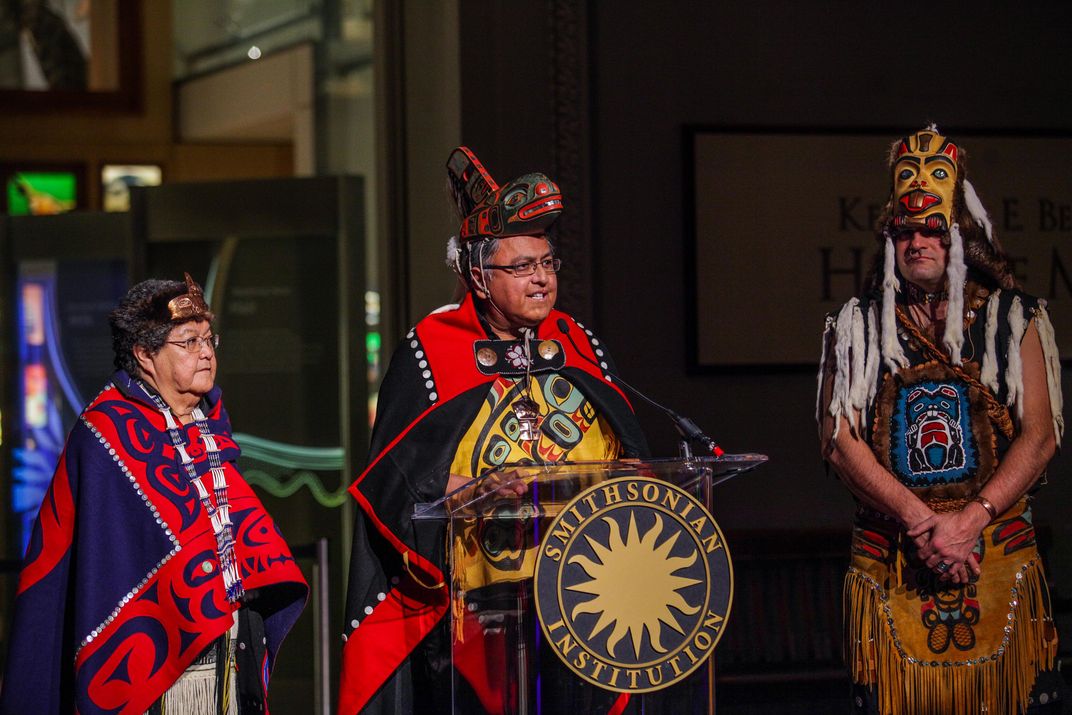
The relationship between digitization and the preservation of cultural heritage is still in the early stages, but the world’s top cultural institutions are working to define a set of universal best practices. This year, the Victoria and Albert Museum in London partnered with the Peri Charitable Foundation to create the Reproduction of Art and Cultural Heritage, or ReACH, initiative. The V&A is no stranger to reproduction issues: Its first director, Sir Henry Cole, penned “International Convention for Promoting Universally Reproduction of Works of Art,” a document promoting production and exchange of sculpture casts, in 1867.
At a series of five roundtables (the Smithsonian hosted one on July 19), experts debate difficult questions: When an object is easily reproduced, what happens to the original’s value? How can digitization be used to preserve cultures at risk of destruction? What are the legal and ethical considerations related to reproduction?
Metallo, who presented a session at the Smithsonian roundtable, doesn’t have the answers—no one does. He says, however, “This is a lot less about making a replica of an object and more about the documentation of our collections in a way that transcribes them for a digital world.”
Hollinger returns to the Killer Whale hat that helped spur these discussions for, if not an answer, a keen observation. “[The Dakl’aweidi] feel a connection to the replica even though, in their words, it’s just a piece of wood,” he explains. “It’s starting to build its own life and its own history in a unique way, even though it’s not a clan crest object.”
Perhaps this simple differentiation is the key to a divisive debate. Reproduced objects, rather than replacing originals, can preserve and protect them while simultaneously creating a new, distinctive legacy.
/https://tf-cmsv2-smithsonianmag-media.s3.amazonaws.com/accounts/headshot/mellon.png)
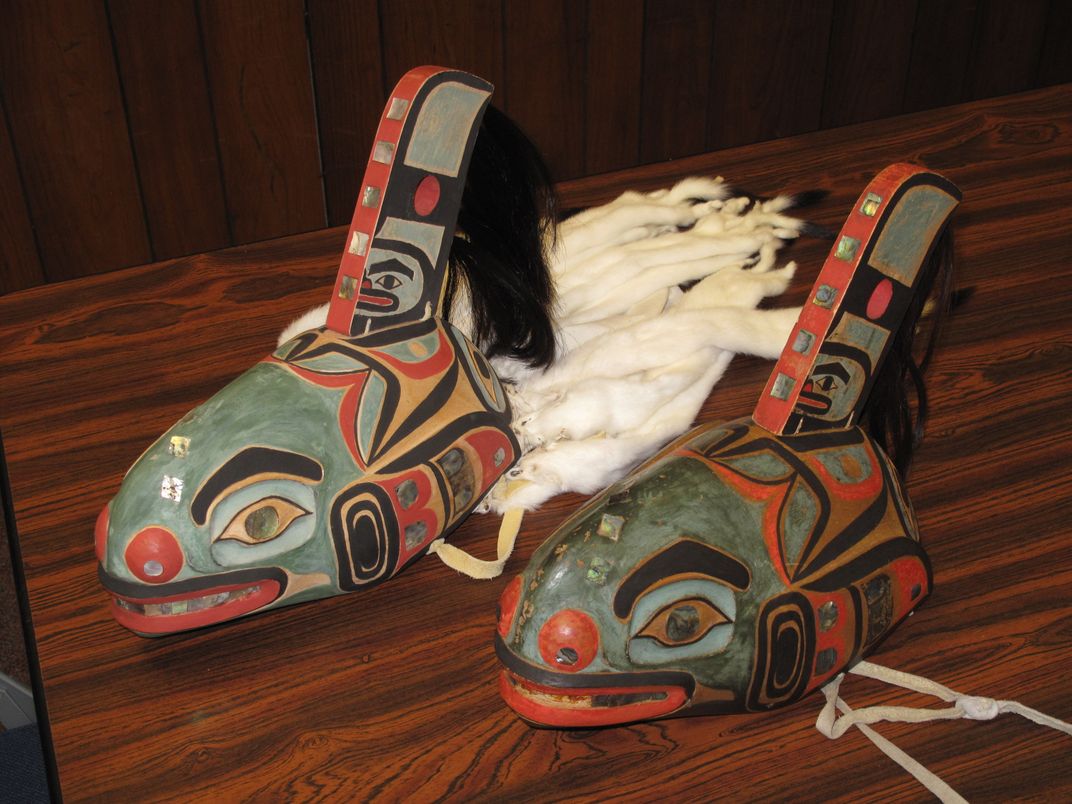
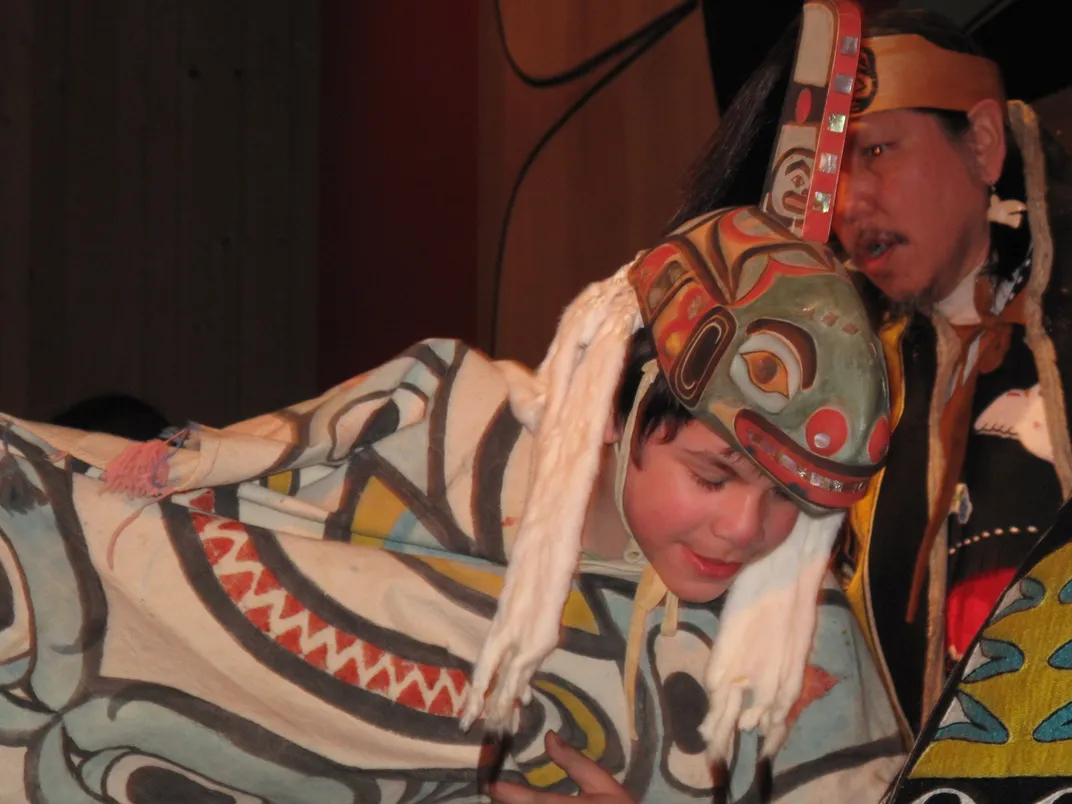
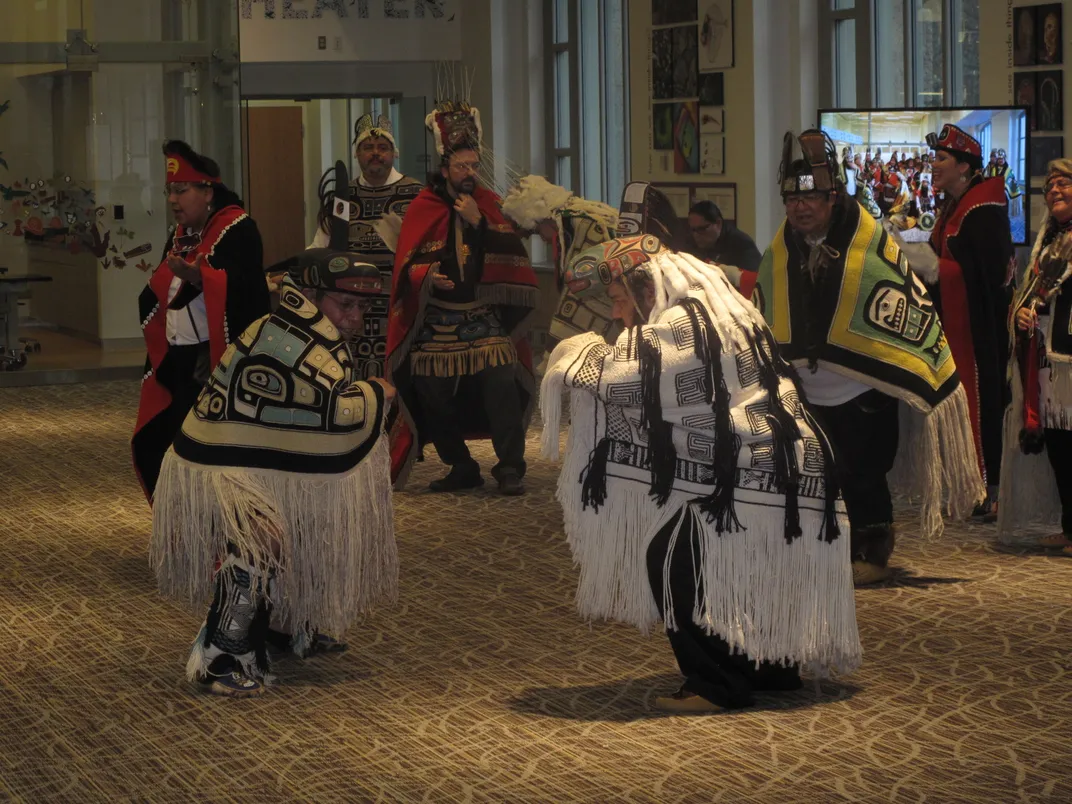
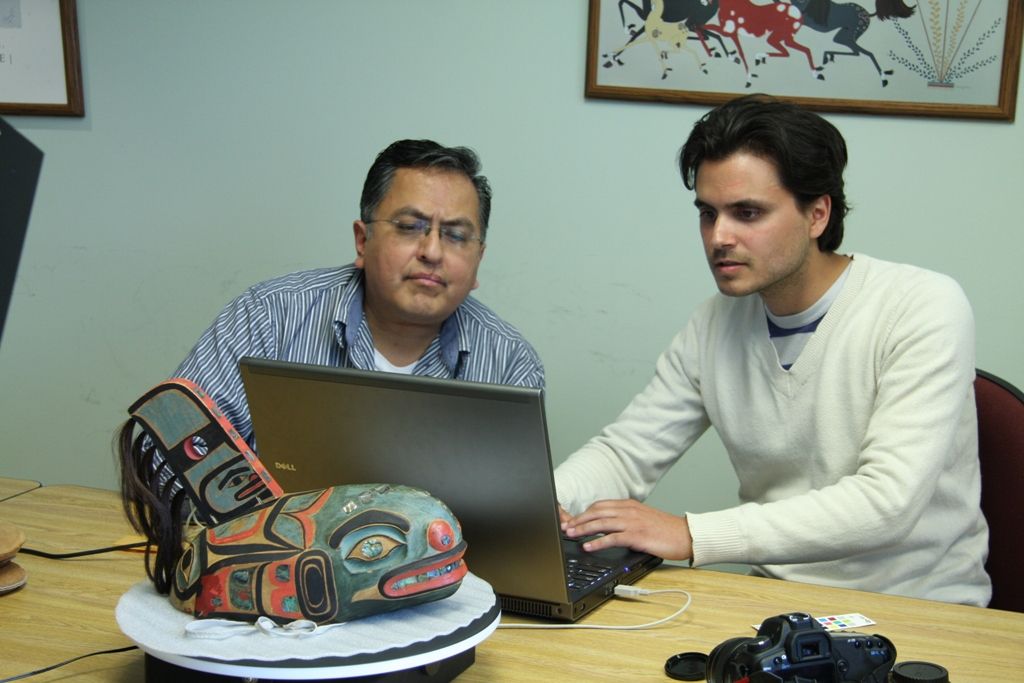
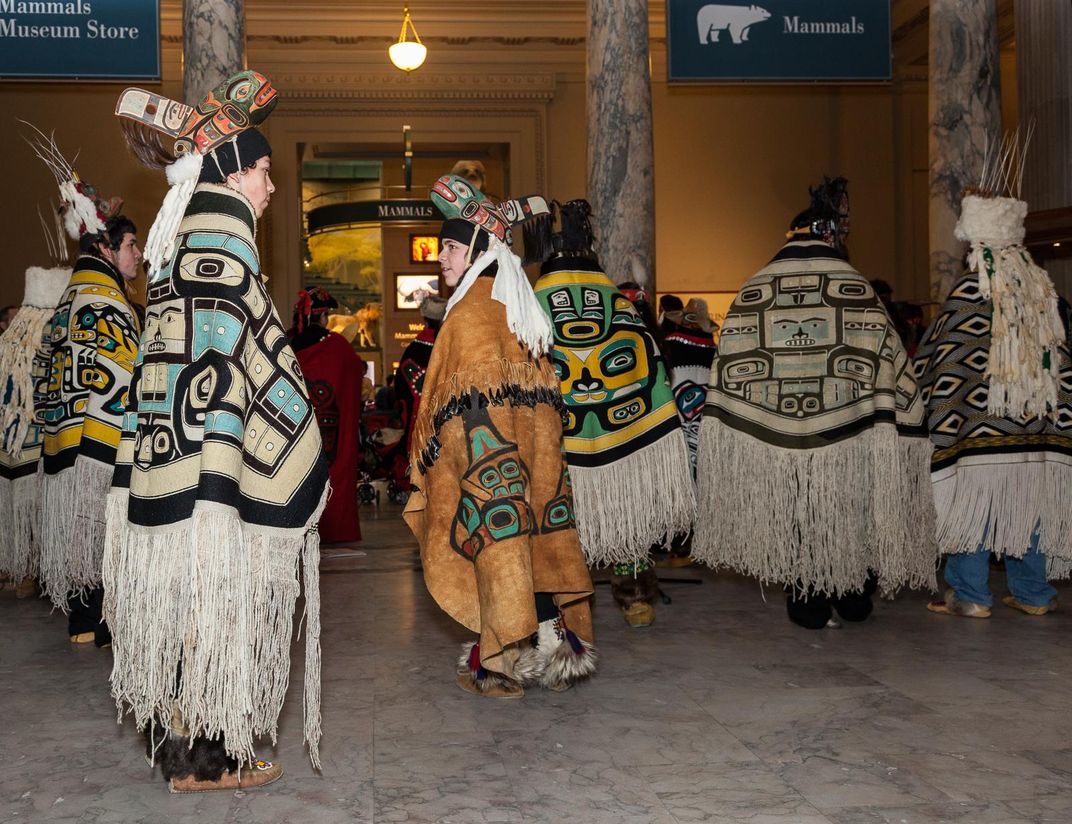


/https://tf-cmsv2-smithsonianmag-media.s3.amazonaws.com/accounts/headshot/mellon.png)